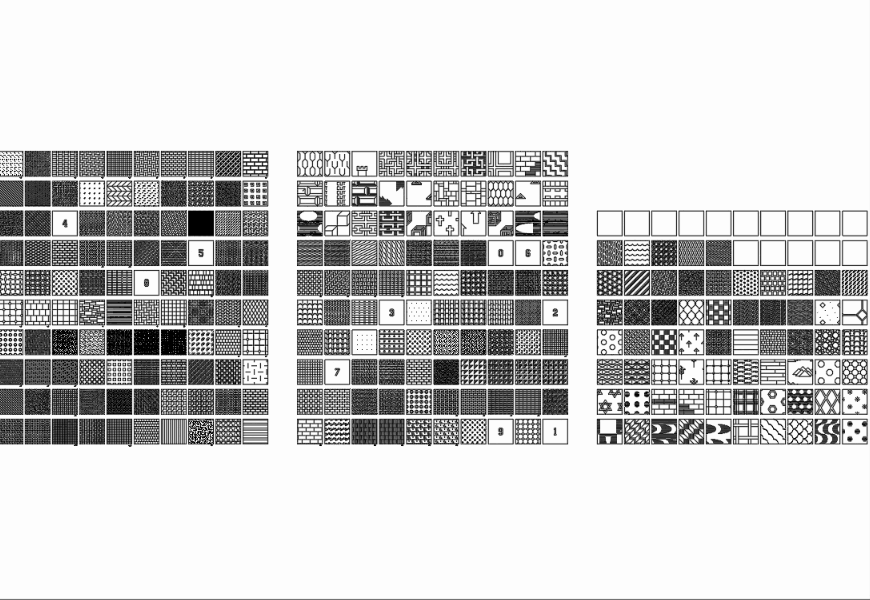Ashlar Hatch Pattern Autocad Blocks Library

Random Ashlar Bond with. AutoCAD and AutoCAD LT users can install the Permacon hatching patterns in their system. Hatch Pattern library.
While AutoCAD comes with a large variety of hatch patterns, you can also create your own. This feature has been around for many years. Hatch patterns are stored in files with a file extension of.pat. You can add your hatch to the default acad.pat or create your own.pat file. As always, don’t forget to make a copy of acad.pat or acadlt.pat before you edit it. If you create your own.pat file, here are some points to remember: • If you aren’t adding patterns to acad.pat or acadlt.pat, you can put only one hatch pattern in a custom.pat file; the filename and pattern name must be the same • You can insert comments in your.pat file after a semicolon • You must press Enter after the end of the last line of the hatch definition Note: To find the location of acad.pat or acadlt.pat, right-click the drawing area and choose Options; then click the Files tab.
Double-click the Support File Search Path item to display the location of the support files. The syntax for hatch patterns is as follows: *pattern-name[, description] angle, x-origin,y-origin, delta-x,delta-y [, dash1, dash2, ] Hatch-pattern definitions have a few rules: • The description is optional; if you include one, precede it with a comma.
• Add the dash specifications only for noncontinuous lines. • You can have more than one definition line (the second line in the syntax I just showed), creating sets of hatch definitions that combine to create the hatch pattern. • Each definition line can be no more than 80 characters. • You can include a maximum of six dash specifications (which include spaces and dots).
• You can add spaces in the definition lines for readability. This following explains the meaning of the terms in the definition: • Angle: Defines the angle of the lines in the hatch pattern. If you also specify an angle in the Boundary Hatch and Gradient dialog box when you place the hatch, AutoCAD adds the two angles. • X-origin: Specifies the X coordinate of the base point of the hatch pattern. Your hatch probably won’t go through 0,0; however, this point lines up sets of lines in hatch patterns, as well as aligning hatch patterns in different areas. Because all hatch patterns are calculated from the base point, they’re always aligned, no matter where they actually appear in the drawing.
• Y-origin: Specifies the Y coordinate of the base point of the hatch pattern. • Delta-x: Specifies the offset of successive lines. This applies only to dashed lines and is measured along the direction of the lines. Specifying a delta-x staggers each successive line by the amount that you specify so that the dashes don’t line up.
Usage Statistics for www.agat-avto.ru - August 2014 - Referrer Usage Statistics for www.agat-avto.ru Summary Period: August 2014 - Referrer Generated 01-Sep-2014 04:09 MSK Hits Referrer ---------------- -------------------- 1083 0.67% Yandex 19 0.01% Rambler 5 0.00% Yahoo! Vizitki ritualjnih uslug obrazec.
• Delta-y: Specifies the distance between lines, measured perpendicular to the direction of the lines. This applies to both continuous and dashed lines. • Dash: Defines a noncontinuous line using the same system as linetype definitions: positive for a dash, negative for a space, and 0 for a dot.
Find more words! Another word for Opposite of Meaning of Rhymes with Sentences with Find word forms Translate from English Translate to English Words With Friends Scrabble Crossword / Codeword Words starting with Words ending with Words containing exactly Words containing letters Pronounce Find conjugations Find names. Shablon anketi v word.